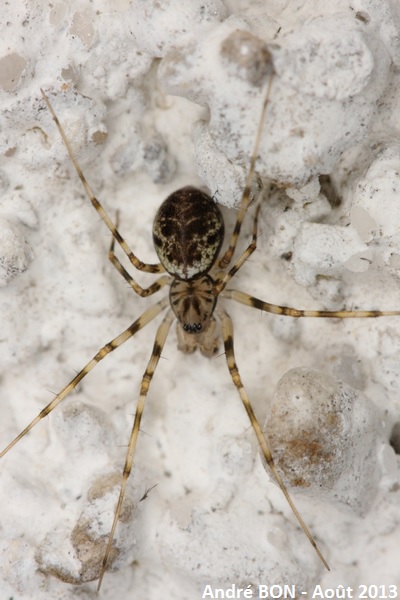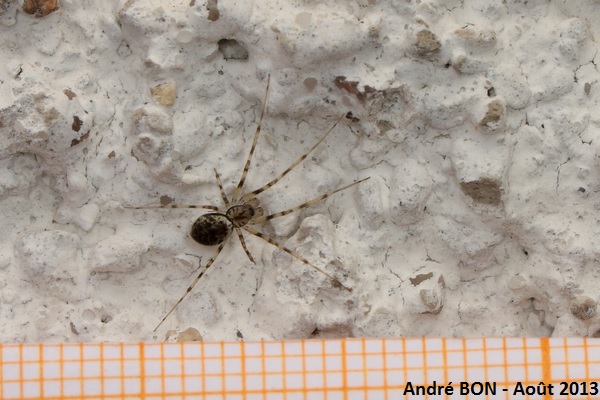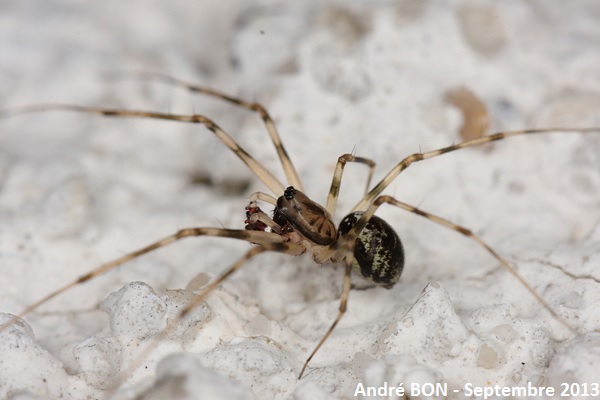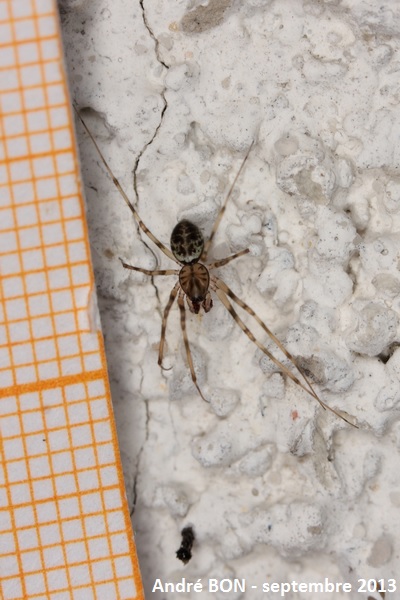





| Invisible Spider (Drapetisca socialis (Sundevall, 1833)) |






|
|
Scientific name: Drapetisca socialis (Sundevall, 1833) Common name: Invisible Spider French name: Order: Araneae Family: Linyphiidae Size: Body size: 3.5 to 5.4 mm. Biotope: Forest, on tree trunks with a preference for trees with smooth bark like Beeches and Birches, sometimes found on the ground. Web: No web or very small. These spiders catch insects walking on tree bark. Observation period: June to October. Geographic area: Palearctic region. |
The Invisible Spider (Drapetisca socialis) is a small size spider showing a pale grey to pale yellow cephalothorax with brownish shades. It bears a black central Y-shaped marking and one short black streak in front of each of the six legs. The abdomen is pale grey, whitish, sometimes slightly greenish, and mottled with dark irregular patterns. The legs are long, thin and ringed. The sternum is pale yellow with brownish edges. This spider is difficult to see on trunks because of its small size, its colours and its immobility. This is the origin of its English common name: Invisible spider. |
| [To know more about the Invisible Spider] [Next picture] [Top] |

|
I am confident with the identification of the Drapetisca socialis species but the place of the observation is rather surprising. This spider may have been pushed away from the trunk where it was sitting (may be the very close Birch), to come to the wall of the house. |
| [To know more about the Invisible Spider] [Next picture] [Previous picture] [Top] |

|
One piece of graph paper on the picture is enough to measure the body size. I have measured 3.5 mm here (from the front of the cephalothorax to the tip of the abdomen). |
| [To know more about the Invisible Spider] [Next picture] [Previous picture] [Top] |

|
Here is a new observation at the same place about one month later. This is quite possible that this one is the same male observed before. |
| [To know more about the Invisible Spider] [Next picture] [Previous picture] [Top] |

|
Side view. The eyes do protrude at the front of the cephalothorax. |
| [To know more about the Invisible Spider] [Next picture] [Previous picture] [Top] |

|
This times I have measured 3.8 mm (from the front of the cephalothorax to the tip of the abdomen). |
| [To know more about the Invisible Spider] [Previous picture] [Top] |

|
I photographed this spider in its usual habitat, that's to say in the forest. I am trying to build a collection of pictures showing the eye pattern of the different spider families. Maybe this picture will be part of the ones selected for the Linyphiidae family. |